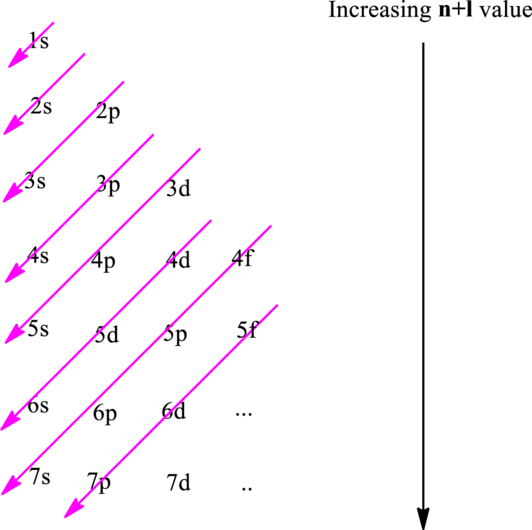
(a)
Interpretation:
Number of valence electrons in
Concept Introduction:
The fundamental principles that are followed to write an electronic configuration include three rules as follows:
Electron in a

Hund’s rule suggests electrons are not allowed to be paired up until each degenerate set of orbital has got at least one electron.
Pauli Exclusion Principle states two electrons within the same orbital cannot possess same set for four possible quantum numbers.
In
(b)
Interpretation:
Number of valence electrons in
Concept Introduction:
Refer to part (a).
(c)
Interpretation:
Number of valence electrons in
Concept Introduction:
Refer to part (a).
(d)
Interpretation:
Number of valence electrons in
Concept Introduction:
Refer to part (a).
Want to see the full answer?
Check out a sample textbook solution
Chapter 2 Solutions
CHEMICAL PRINCIPLES PKG W/SAPLING
- Item 5 Answer the following questions related to the chemical bonding in substances containing Cl. (a) What type of chemical bond is present in the Cl2 molecule? (b) Cl2 reacts with the element Sr to form an ionic compound. Based on periodic properties, identify a molecule, X2, that is likely to react with Sr in a way similar to how Cl2 reacts with Sr. Justify your choice. (c) A graph of potential energy versus internuclear distance for two Cl atoms is given below. On the same graph, carefully sketch a curve that corresponds to potential energy versus internuclear distance for two Br atoms. (d) In the box below, draw a complete Lewis electron-dot diagram for the C2Cl4 molecule. (e) Answer the following based on the diagram you drew above. (i) What is the hybridization of the CC atoms in C2Cl4? (ii) What is the approximate chlorine-carbon-chlorine bond angle in C2Cl4? (iii) Is the C2Cl4 molecule…arrow_forward8. Of the following, which is most likely to become a cation as a result of a chemical reaction? What would be the charge on that cation? a) N; -3 b) Ne; +1 c) Na; +1 d) I don't know how to make this type of prediction. Aren't there too many variables to tell?arrow_forwarda) Write the electronic configuration in s, p, d, f and K L M N, for the atom which belongs to period 5 and cannot form the ions? b) Mention the number of electrons and neutrons of the above atom. c) What is the volume (in ml) of a 0.2 M AgNO3 solution containing 8.5 grams of AgNO3?arrow_forward
- Hi, can someone pls tell me if these answers are correct and help me find the answers to the ones I didn't know, thanks ?arrow_forwardA certain element, M, is a main-group metal that reacts with chlorine to give a compound with the chemical formula MCl2 and with oxygen to give the compound MO.(a) To which group in the periodic table does element M belong?(b) The chloride contains 44.7% chlorine by mass. Name the element Marrow_forwardQ5barrow_forward
- 10 (c) An element T has a melting point of 30°C and a boiling point of 2440 °C. It conducts electricity at room temperature. It burns in oxygen to form an oxide with formula T₂O₂ which can react with both acids and bases. T also forms a compound with fluorine, which has a high melting point and conducts electricity in molten form. The approximate relative atomic mass of T is 70. (1) What type of oxide is T,O,? (i) Give two properties that indicate that T is probably a metal. 1. 2 (iii) Predict the formula for the fluoride of T E [1] [2] N [1] (iv) What are the products of the electrolysis of the molten fluoride of using inert electrodes? and (v) In which group and period of the Periodic Table will T be placed? group period 21 2) (vi) Write the symbol of the element in the Periodic Table which most closely resembles T.arrow_forwardTestosterone is an anabolic steroid. The structure of testosterone is shown below. What is the idealised bond angle at the indicated atom (ii) ? Hint: atom (iv) has been completed for you as an example. (iv) bond angle: 109.5°, geometry of the electron pairs: tetrahedral, shape of the bonds: tetrahedral ·····|||I H ····||||I ii ivarrow_forwardFor many years after they were discovered, it was believed that the noble gases could not form compounds. Now we know that belief to be incorrect. A mixture of xenon and fluorine gases, confined in a quartz bulb and placed on a windowsill, is found to slowly produce a white solid. Analysis of the compound indicates that it contains 77.55% Xe and 22.45% F by mass.(a) What is the formula of the compound?(b) Write a Lewis structure for the compound.(c) Predict the shape of the molecules of the compound.(d) What hybridization is consistent with the shape you predicted?arrow_forward
- What kind of bonds will be formed between the element with the electronic structure (a) 1s22s22p5 and the element with the electronic structure 1s22s1; (b) between the element with the electronic structure 1s22s22p2 and the element with the electronic structure 1s1; (c) between two atoms with the electronic structure 1s22s22p6 ? In each case, briefly explain.arrow_forwardFor two adjacent ions, the net potential energy is: А В + rn EN - - r where A, B and n are constants, r is in nm and E is in eV. (a) Find the expression for the bonding energy Eg in terms of A, B and n. (b) For two pairs of ions, with A = 1.436, B = 5.86 x 106 and n = 9, solve for ro and Eg.arrow_forwardWhich of the following elements are transition metals/ions?A. ZnB. ScC. V3+arrow_forward
 ChemistryChemistryISBN:9781305957404Author:Steven S. Zumdahl, Susan A. Zumdahl, Donald J. DeCostePublisher:Cengage Learning
ChemistryChemistryISBN:9781305957404Author:Steven S. Zumdahl, Susan A. Zumdahl, Donald J. DeCostePublisher:Cengage Learning
 Introduction to General, Organic and BiochemistryChemistryISBN:9781285869759Author:Frederick A. Bettelheim, William H. Brown, Mary K. Campbell, Shawn O. Farrell, Omar TorresPublisher:Cengage Learning
Introduction to General, Organic and BiochemistryChemistryISBN:9781285869759Author:Frederick A. Bettelheim, William H. Brown, Mary K. Campbell, Shawn O. Farrell, Omar TorresPublisher:Cengage Learning


